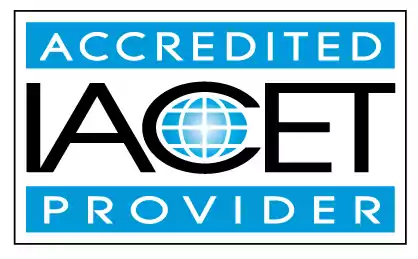Describe the components of an emergency preparedness plan for child care facilities
Ensure the safety of children in child care facilities with a comprehensive emergency preparedness plan. Our page will guide you in understanding the requirements of Child Care Subsidy, Child and Adult Food Program, MSDE Child Care Credential, Tiered Reimbursement, and the Child Care Career and Professional Development Fund. Trust our expertise in early childhood education and child care centers to provide the necessary support for your child care facility.Trainings incorporating this outcome
Proficiency Level
Target Audience
Price
States
Alabama (1) Alaska (1) Alberta (1) Arizona (1) Arkansas (1) Australia (1) California (1) Colorado (1) Connecticut (1) Delaware (1) District of Columbia (1) Florida (1) Georgia (1) Hawaii (1) Idaho (1) Indiana (1) Iowa (1) Kansas (1) Louisiana (1) Maine (1) Maryland (1) Massachusetts (1) Michigan (1) Minnesota (1) Mississippi (1) Montana (1) Nebraska (1) New Hampshire (1) New Mexico (1) Newfoundland and Labrador (1) North Dakota (1) Nova Scotia (1) Ohio (1) Oklahoma (1) Oregon (1) Pennsylvania (1) Prince Edward Island (1) Puerto Rico (1) Quebec (1) Rhode Island (1) Saskatchewan (1) South Carolina (1) South Dakota (1) Texas (1) Utah (1) Vermont (1) Virgin Islands (1) Virginia (1) Washington (1) West Virginia (1) Wisconsin (1)
6 hours courses
Related Outcomes
- Identify and understand the requirements of Child Care Subsidy (POC), Child and Adult Food Program, MSDE Child Care Credential, Tiered Reimbursement, and the Child Care Career and Professional Development Fund
- Describe the components of emergency preparedness in the child care setting.
- Define what is an emergency and the legal requirements for emergency preparedness for child care professionals.
- Identify the components of a lesson plan for the family child care setting
- Describe additional provisions to the emergency preparedness plan
- Demonstrate understanding of the components of an emergency preparedness plan.
- Identify responses to typical daily child care scenarios with solutions that are aligned with Child Care Regulations
- Demonstrate understanding of considerations before completing an emergency preparedness plan.
- Identify strategies for the child care provider that will promote successful child development.
- Identify the signs of illness in children and describe when a child should be excluded from care
- Identify the different types of portfolios used in child care programs, and the appropriate portfolio components for each type.
- Identify strategies for the child care provider that will promote successful child development. Identify strategies for working with children with special needs
- Demonstrate an understanding of optimal room arrangements for family child care settings and their components.
- Describe a staff orientation in accordance with Child Care Regulations
- Demonstrate understanding of optimal room arrangements for family child care settings and their components.
- Identify factors that may influence learning for a child in the family child care environment.
Related Articles
- Child care education
- A Comprehensive Guide to Opening an In-Home Daycare in South Carolina
- Emergency Preparedness in Childcare: Creating and Practicing Safety Protocols
- Turn Your Home into a Thriving Family Childcare Business!
- Emergency Preparedness Training Every Childcare Provider MUST Know
- Why Every Childcare Worker Needs This CPR & First Aid Training
- Basic Health and Safety Training: The Essential Guide for New Child Care
- What Parents and Educators Need to Know About Child Safety
- Child Care Licensing in Texas: What You Need to Know to Stay Compliant
- Basic Health and Safety: The Must-Know Training for Childcare Professionals
- Basic Health and Safety in Childcare: A Complete Guide for Providers
- Emergency Preparedness Training for Childcare Providers: Keeping Kids Safe in a Crisis
- The Ultimate Guide to Medication Administration Training for Child Care Providers
- Stay Ready: First Aid and Emergency Procedures in Early Childhood Education
- MSDE Basic Health and Safety: What Maryland Childcare Providers Need to Know
- From Meds to Milestones: Why Medical Administration Training Is Crucial in Child Care Settings
- From Band-Aids to EpiPens: Medical Administration Training in ECE
- Navigating the Maze of Child Care Licensing in Texas
- Critical Skills for Childcare Professionals: Health, Safety, and Emergency Preparedness Training
- Emergency Preparedness in Child Care: What Every Provider Should Know
 0.6 CEUs
0.6 CEUs